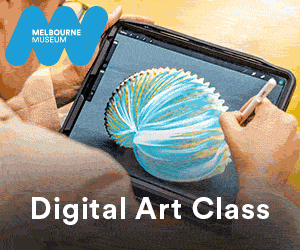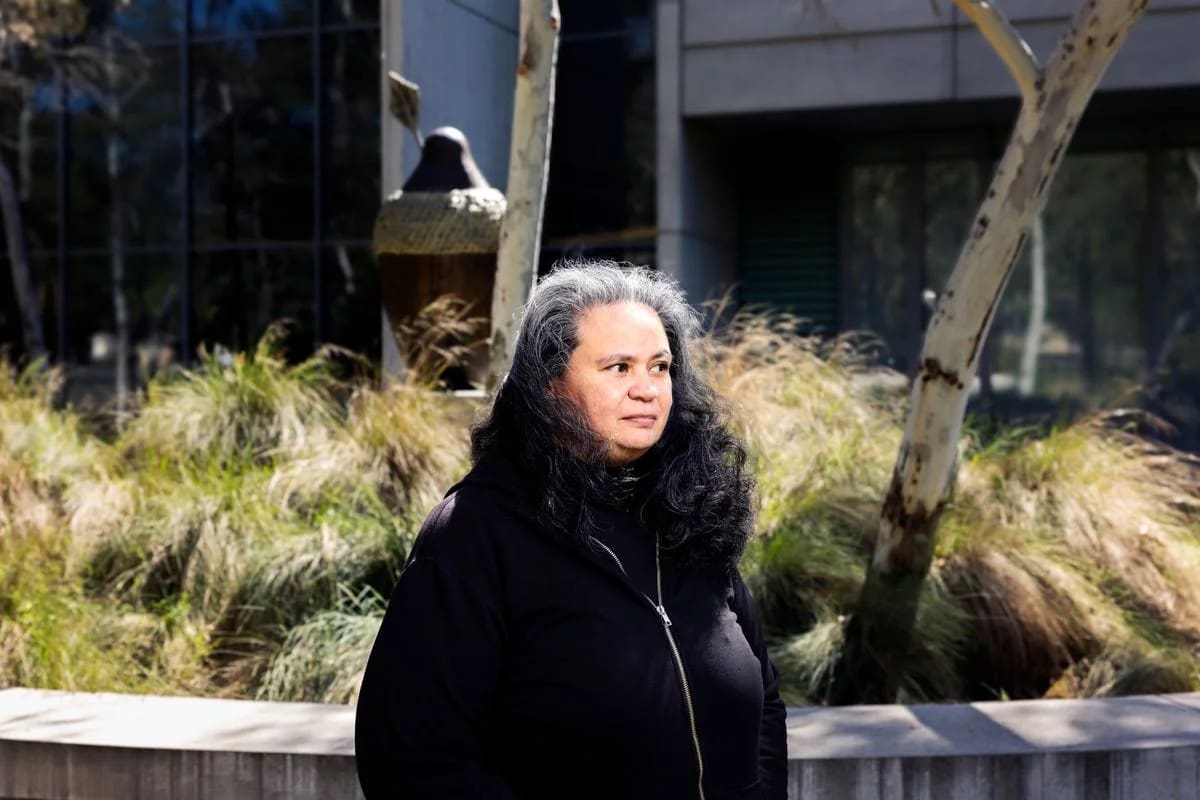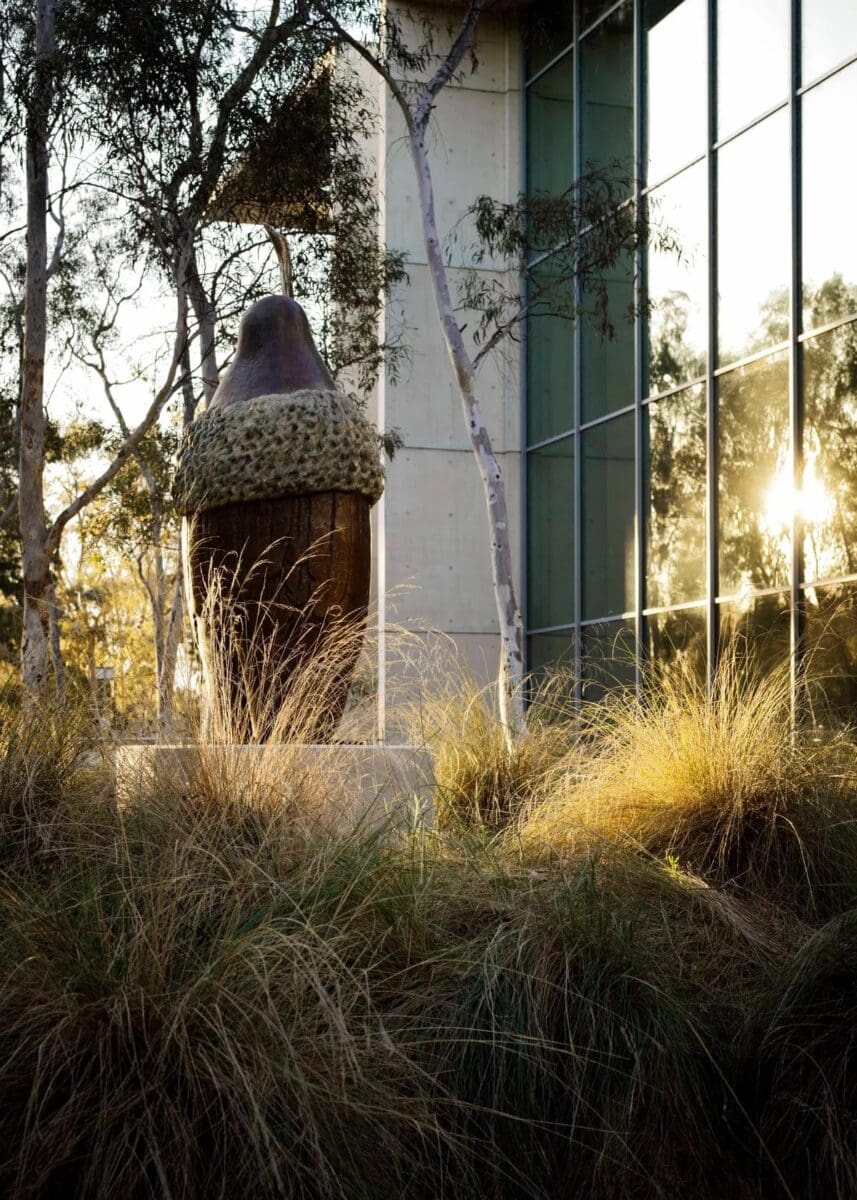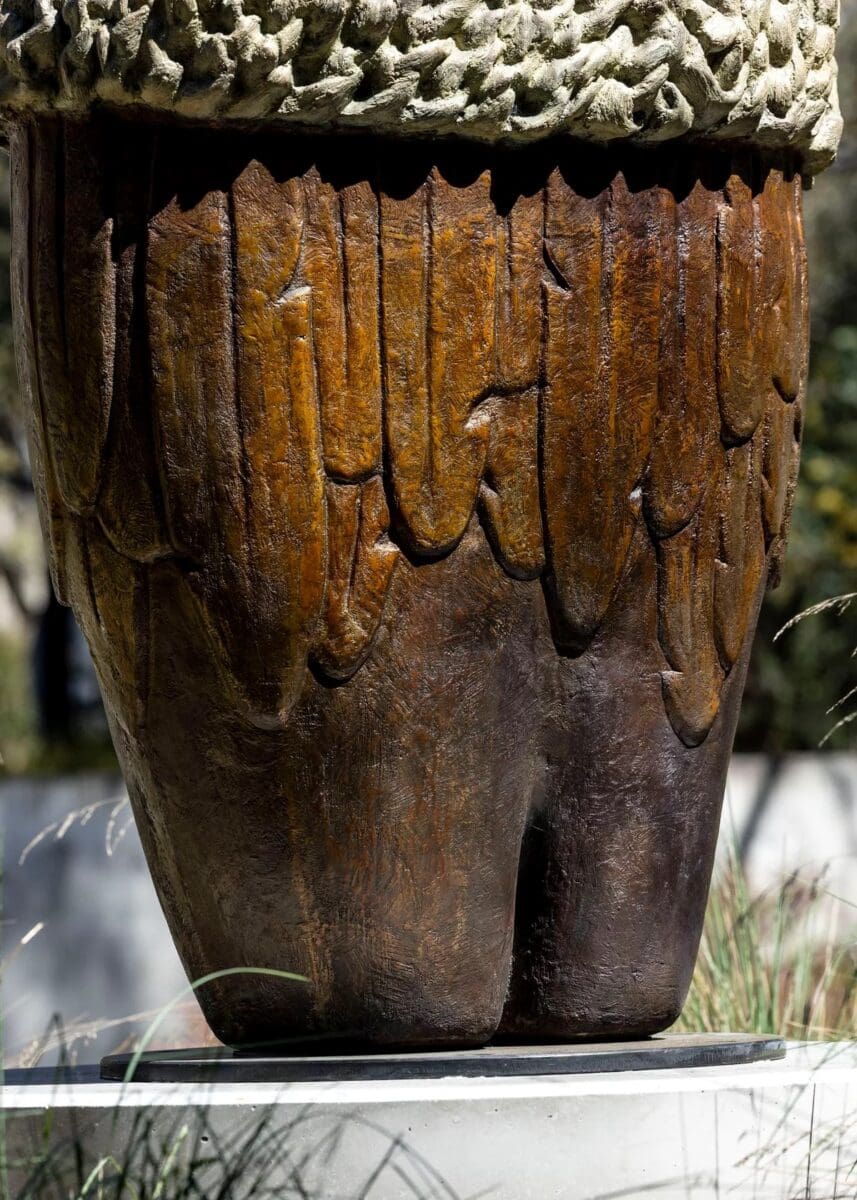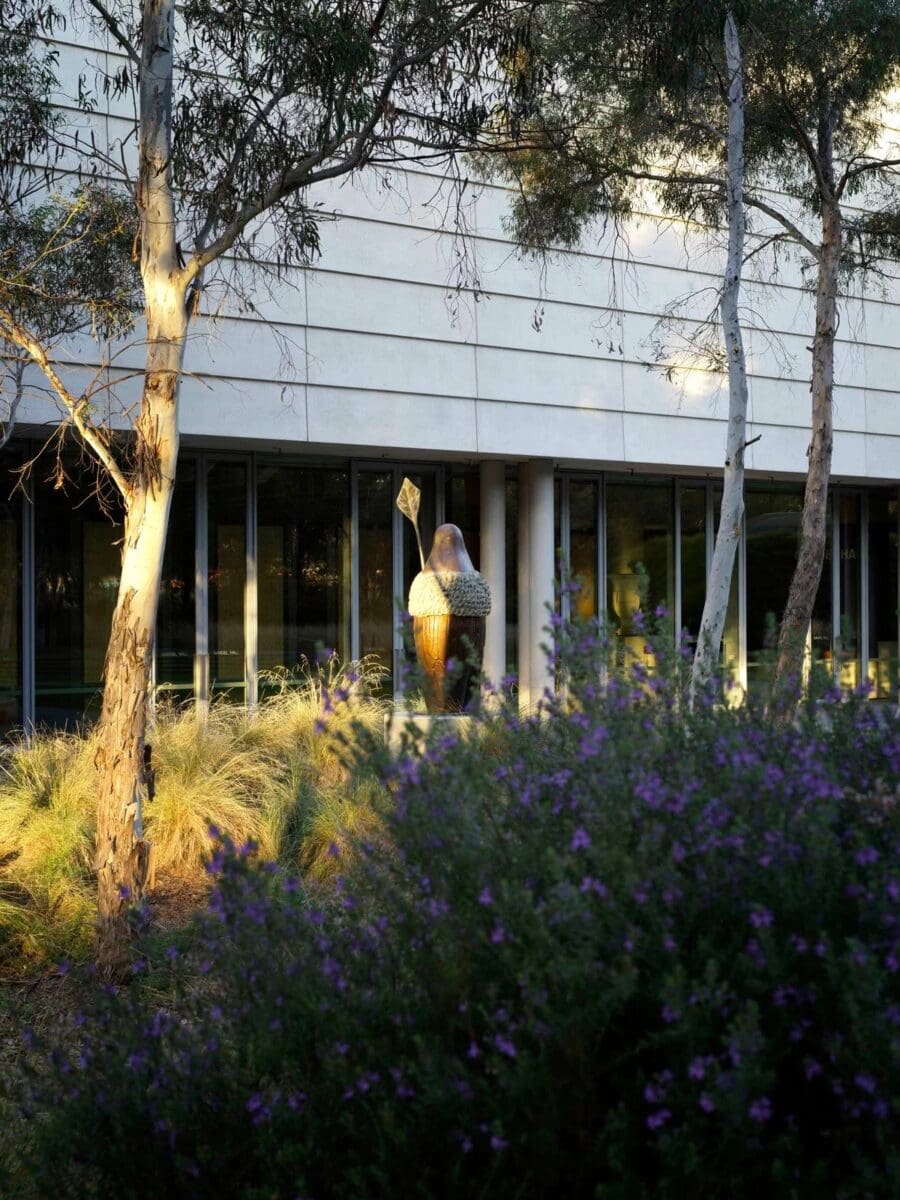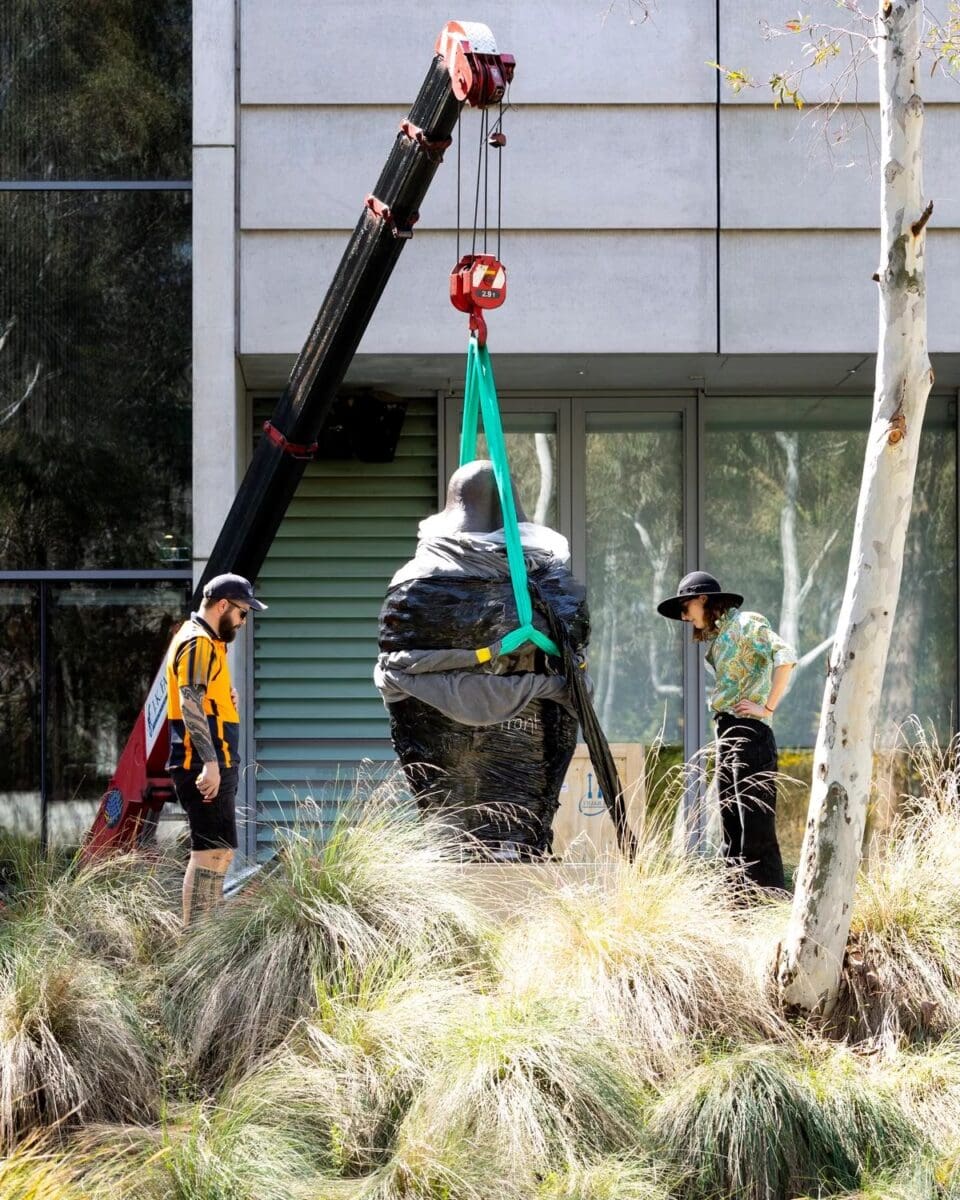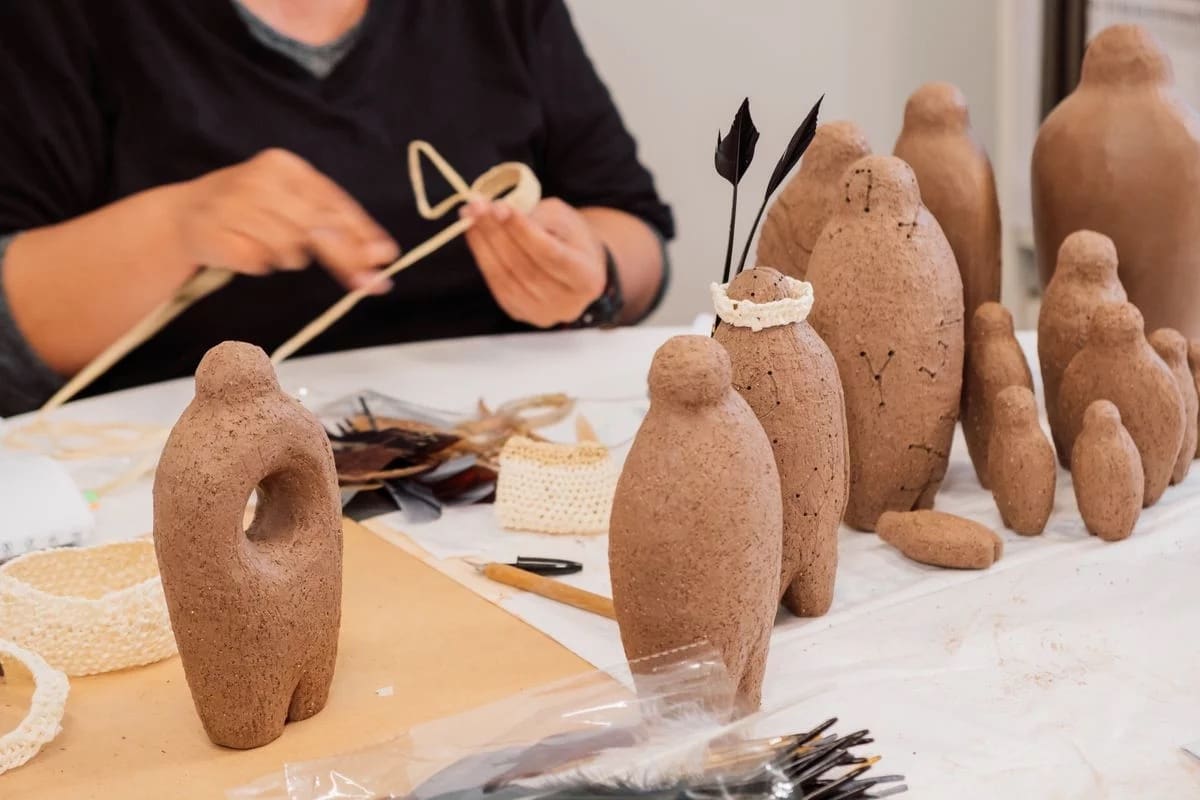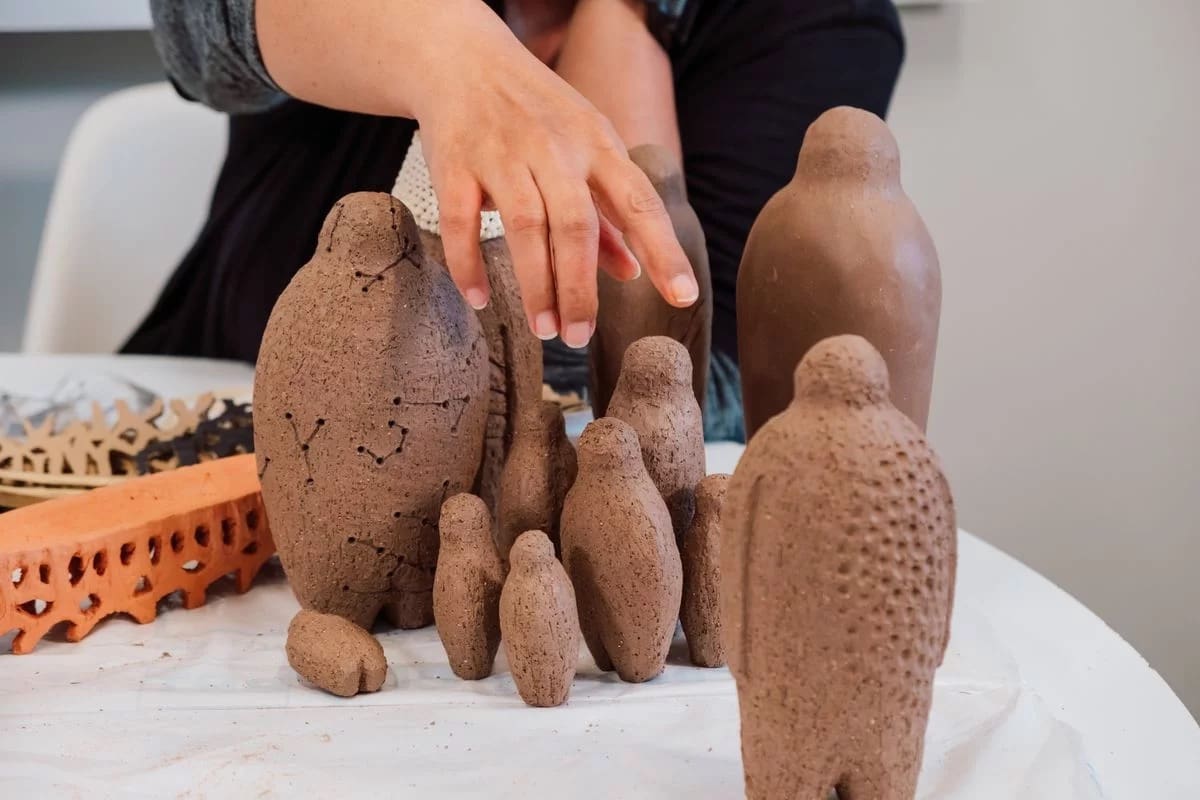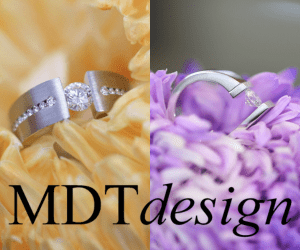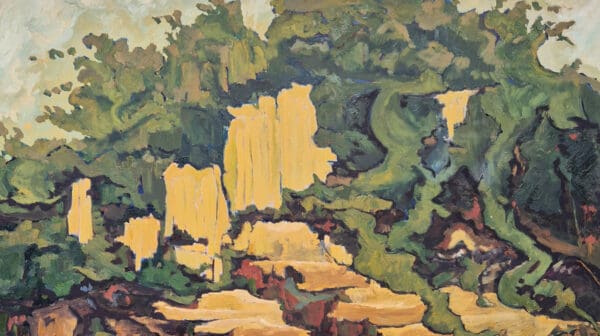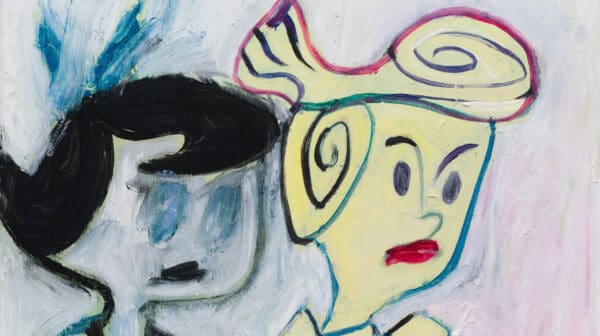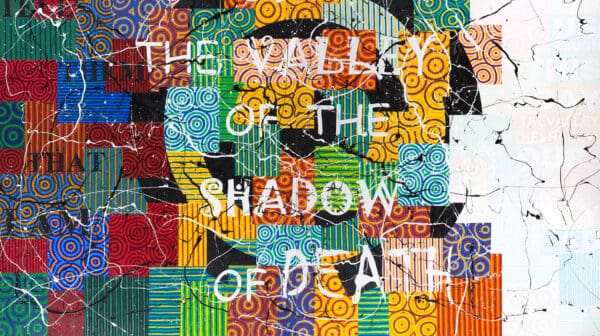Janet Fieldhouse is best known for her intricate ceramic sculptures—carefully crafted characters and vessels often measuring no more than 20cm in diameter. So, the question everyone is asking about Sister Charm, her commission for the National Gallery of Australia’s sculpture garden, is how did she go adapting her practice to a larger scale? Her answer: “If I had a bigger kiln, it would have been even bigger.”
Of course, Sister Charm, the object as it stands in the garden, was not made in a kiln or by Fieldhouse’s hands—but a sculpture of this scope is more than its final product. It’s the ideas and planning, the practice, and the prototypes that come before it. “I had already done a form, and ended up doing another 10 or 12, to see the shape,” says Fieldhouse of its iterations. “I started carving just to see what it would look like, and then added the different elements to it.”
These different elements are her signature totems. Her works often feature symbolic details in different materials—feathers, raffia, seagrass fibres and jute twines—always with specific cultural or personal references that add layers of meaning. In Sister Charm, Fieldhouse uses her totems, but casts them all in bronze. There’s the ‘weaving’ used to represent the material of vessels—bags and baskets used to carry food items— and the ‘feathers’ that represent dancing, and a turtle on the left leg—“a totem of my great grandmother”.
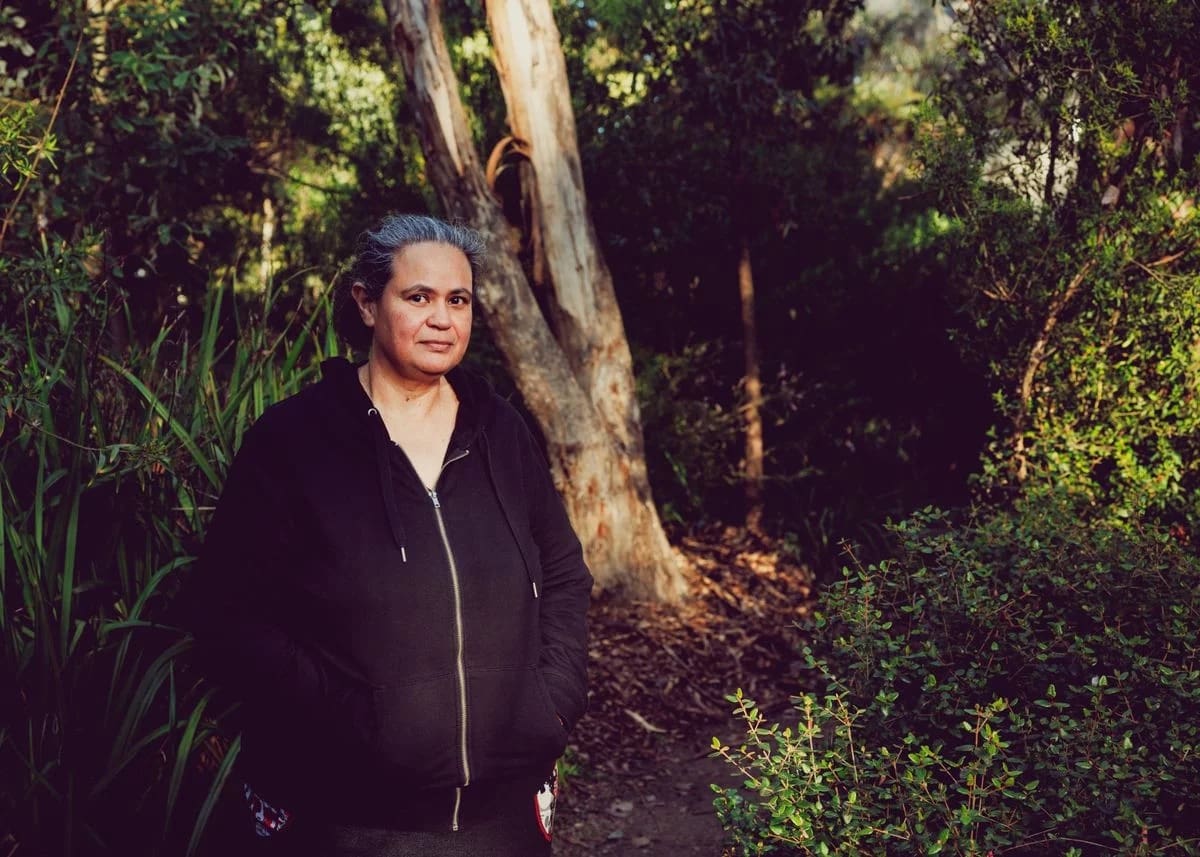
Born in Cairns, Fieldhouse maintains a strong matrilineal connection to the Badu, Mua, Keriri and Erub islands and South Sea Islander communities. She is the first Torres Strait Islander to be represented in the NGA’s sculpture garden, the significance of which isn’t lost on curator Tina Baum. “I’ve been a great fan of Janet’s from the beginning,” says Baum. “And I looked at the sculpture garden, and there were very few women, and there was no Torres Strait Islander representation.”
Sister Charm is the second in a series of three commissions that the NGA is undertaking. “When we were given the opportunity to put forward an array of artists for this project,” says Baum, “I’d just seen Janet’s latest show [an exhibition from 2021 called Never the Same], where she’d made these new charm dolls. I loved them. I knew about this cultural practice in the Torres Strait of creating charms, they’re usually hidden or for personal use, so seeing these charms with these really cool heads and different adornments, I thought they were really impressive.”
The positioning of Sister Charm in the sculpture garden is no accident either. “It’s looking over Thanakupi,” says Fieldhouse, referring to the 2010 sculpture Eden from the late Dhaynagwidh/ Thaynakwith artist. “She’s the most well-known Indigenous ceramicist,” says Baum of Thanakupi. 69 “She was the earliest, so a real icon. Like Emily [Kam Kngwarray] is with her paintings, Thanakupi is with ceramics.” The positioning of the two sculptures together holds great significance for Fieldhouse, who has long revered Thanakupi’s work. “Thanakupi was one of the inspirations and mentors when we were at TAFE. That was when I was a student in the 90s.”
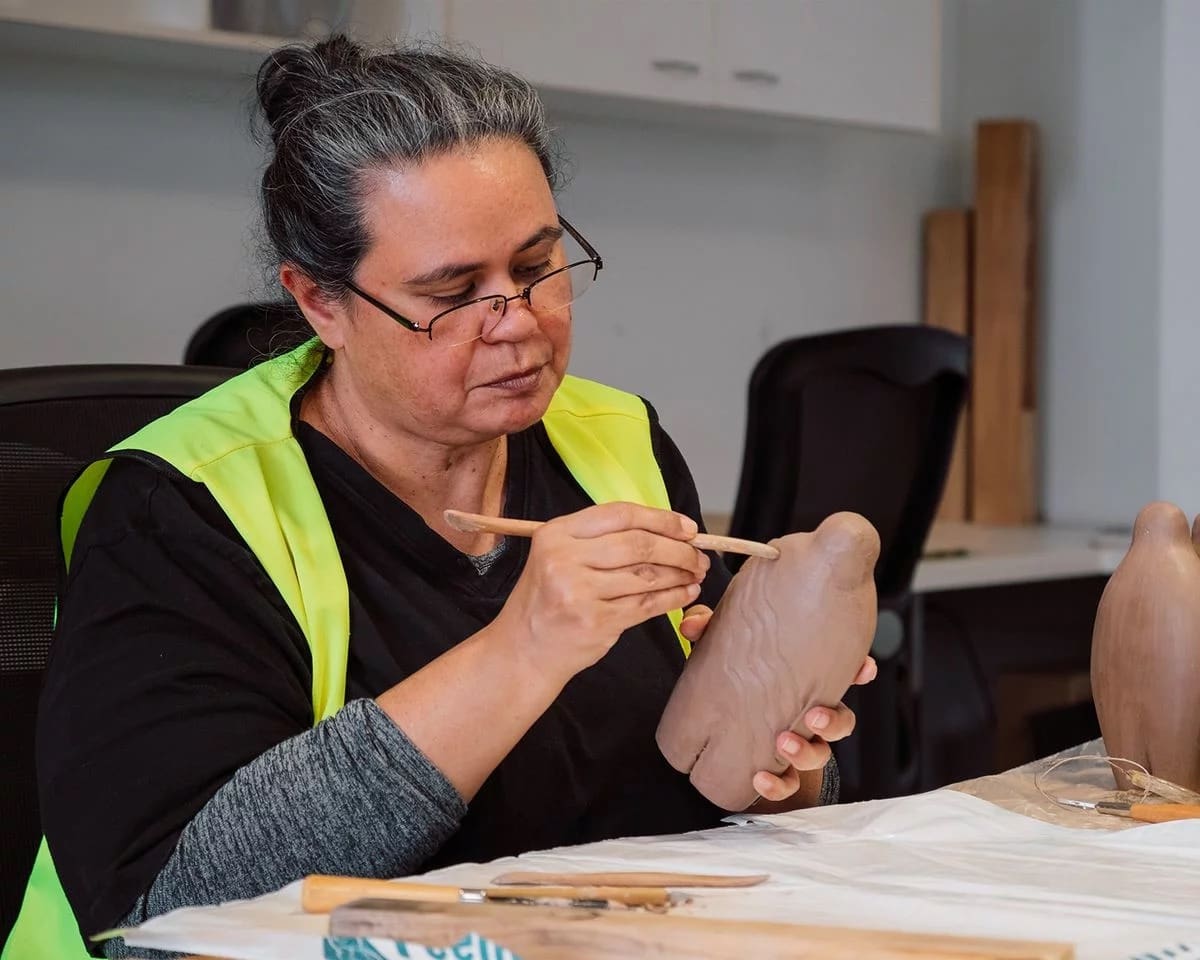
While Fieldhouse studied art at TAFE, she was a maker long before that. “I’ve been doing art since I was little. I was self-taught. It was drawing first, I was doing art classes at high school. They had ceramics, and I liked it, but I was stronger in drawing. Then I went to TAFE and…it’s one of those things, I was going to do batik instead of pottery and next minute I swapped it and made ceramics my major…it’s one of those things where you have to be really into it.”
Clay is a temperamental medium, requiring great dedication, practice, and a lot of patience. These are the skills Fieldhouse tries to impart to students. While she no longer teaches professionally, since art became a full-time career, she has recently mentored for the Blak Design Project (a platform supporting sustainable, First Peoples design practices) in its ceramic iteration. “They’re thinking about how to express themselves, it was quite interesting,” she says of the budding ceramicists she worked with.
But she has no illusions about the difficulty that any artist in clay faces. “I know that pottery and ceramics is a special material, and you have to really think about it if you want to do it. The process of cleaning and making the clay is work in itself, and then you’ve got the commercial clay that you can go and buy, but it’s expensive. It’s hard to see how they [up-and-coming ceramicists] could take to it as a fulltime artist, how I do. You have to find kilns, you don’t know if your kilns are going to break down…there’s so many things!”
I ask her how she thinks she managed to forge a career out of clay. She simply says, “It’s a love dedication.” A similar process to making one of her artworks, I imagine. She starts carving, just to see what it looks like.
Janet Fieldhouse: Sister Charm
National Gallery of Australia
On now—23 September
Fired Up: Stories Through Embers and Earth
Blak Design presented by Koorie Heritage Trust
On now—11 February
This article was originally published in the January/February 2024 print edition of Art Guide Australia.

